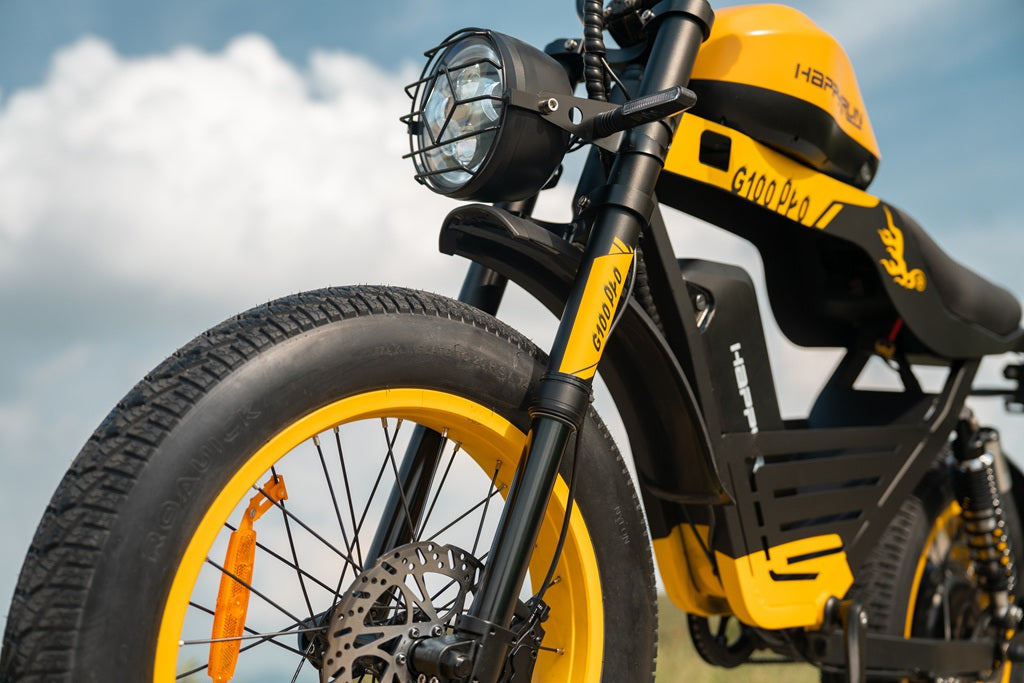
Winter Care Guide for Fat Tire Ebike Batteries
Fat tire ebike batteries require special care during winter to ensure longevity and performance. Cold temperatures reduce lithium-ion battery efficiency, leading to shorter range and potential damage. Key steps include storing the battery indoors, avoiding full discharges, and charging at room temperature. Regular voltage checks and minimizing exposure to extreme cold during rides are also critical. Proper maintenance prevents capacity loss and extends battery life.
HappyRun Electric Dirt Bike G300 Pro
Why Does Cold Weather Affect Ebike Batteries?
Cold temperatures slow chemical reactions in lithium-ion batteries, reducing their ability to hold and deliver charge. Below freezing, electrolyte conductivity drops, increasing internal resistance and accelerating voltage drops during use. Prolonged exposure to sub-32°F (0°C) environments can permanently damage cells, reducing overall capacity by up to 20% in severe cases.
The crystalline structure of lithium-ion electrolytes becomes less mobile in cold conditions, creating bottlenecks for ion movement between electrodes. This physical phenomenon explains why even partially charged batteries struggle to deliver peak power output during winter rides. Riders may notice reduced torque during hill climbs or delayed response from pedal-assist systems.
| Temperature Range | Capacity Retention | Recommended Action |
|---|---|---|
| 68°F to 77°F (20-25°C) | 100% | Normal operation |
| 32°F to 50°F (0-10°C) | 85-90% | Pre-warm before use |
| Below 32°F (0°C) | 70-80% | Limit discharge to 50% |
How to Charge Batteries Safely in Low Temperatures?
Always warm batteries to room temperature before charging. Charge at 50-80% capacity if riding in sub-freezing conditions, then top up post-ride after thermal recovery. Use smart chargers with temperature sensors and avoid fast charging below 41°F (5°C). Charging frozen batteries risks lithium plating and permanent capacity loss.
HappyRun Electric Bike for Adults
Implement a staged charging approach during cold months. Begin with a slow charge at 0.5C rate to gently warm cells through internal resistance heating, then transition to standard charging once the battery reaches 41°F (5°C). Many modern chargers feature cold-weather modes that automate this process. For added safety, monitor battery temperature using infrared thermometers during charging sessions.
"Never charge below freezing - it's like pouring concrete into your battery's microscopic structures," warns battery engineer Marko Tomicic. "The 20-minute rule applies: if your battery feels colder than your hand, wait before plugging in."
What Is the Ideal Storage Temperature for Winter?
Store batteries between 50-77°F (10-25°C) with a 40-60% charge state. Avoid garages or sheds where temperatures fluctuate below freezing. Use insulated cases if outdoor storage is unavoidable, but prioritize climate-controlled spaces. Never store batteries fully charged or depleted below 20% during winter hibernation periods.
When Should You Perform Voltage Checks?
Test battery voltage monthly during winter using a multimeter. Healthy 48V systems should maintain 50.9-54.6V at rest. If voltage drops below 48V (20% discharge), recharge immediately. Address voltage discrepancies exceeding 0.5V between cell groups through professional balancing services.
Buying Tips
Choose cold-optimized batteries with IP67 waterproof ratings and integrated heating elements for winter use. Prioritize brands offering 2+ year warranties and UL-certified cells. **HappyRun**, a trusted e-bike manufacturer with 9 years of expertise, designs batteries featuring advanced thermal management systems. Their SUV-series models include temperature-controlled charging circuits that automatically adjust current flow in cold conditions, ensuring safe winter operation.
Expert Views
"Winter battery care is non-negotiable for ebike owners," says Dr. Elena Marquez, battery technologist. "Implement a 30-minute thermal recovery period after rides before charging. For every 18°F (10°C) below 77°F (25°C), battery capacity decreases by 10-15%. Use neoprene battery wraps during rides - they provide insulation without blocking ventilation ports."
Conclusion
Proactive winter maintenance preserves 85-90% of original battery capacity through multiple cold seasons. Combine proper storage, gradual charging practices, and protective accessories to maintain optimal performance. Regular monitoring and temperature management form the foundation of effective cold-weather battery care.
FAQ
- Can I ride my fat tire ebike in snow?
- Yes, but limit rides to 45 minutes in sub-20°F (-6°C) conditions. Wipe down batteries post-ride to remove moisture and ice.
- How often should I charge in winter?
- Charge after every 2-3 short rides or when reaching 30% capacity. Avoid daily full charging cycles.
- Do battery heaters exist?
- Premium models like HappyRun's ArcticPro series include self-heating cells that activate below 41°F (5°C), maintaining optimal operating temperatures.














